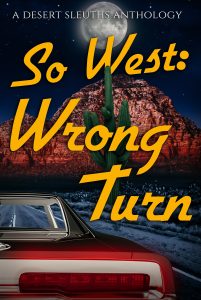As part of our ongoing challenge to read through the 100 best of the bestsellers as listed in The Bestseller Code by Jodie Archer and Matthew L. Jockers, let’s take a look at Primary Colors, by Joe Klein, from a Reader’s Perspective. (Discussion is rounded-up here.)
This post contains spoilers.
Joe Klein’s Primary Colors: A Novel of Politics*
(*Amazon affiliate link)
We have now read 3 of the 100 potential bestsellers listed in The Bestseller Code:
#100 – Shutter Island, by Dennis Lehane
#99 – State of Wonder, by Ann Patchett
#98 – Primary Colors, by Joe Klein
Even though the algorithm discussed in The Bestseller Code considered the same parameters, these three books illustrated just how diverse a result can come out of those parameters. Shutter Island is a mystery/thriller, where the weather and the sea (water) are a main theme and everything looks gray and feels damp and dreary. State of Wonder is a literary adventure where the Amazon (both the river and the jungle) is a main theme, providing color with plants, animals, and the indigenous tribes.
Primary Colors, a political novel, is infused with its own distinctive color – colorful language, colorful descriptions of rooms, and colorful descriptions of the character’s clothing. The story is told mainly through dialogue – so much dialogue! As an introvert, I was almost overwhelmed with the onslaught of dialogue. And then there’s the number of characters introduced – so many that the book really should come with a list of them.
In Primary Colors, Henry Burton becomes an integral member of Jack Stanton’s presidential campaign. Jack Stanton is the Democratic governor of a small southern state, the penultimate politician, who has aspired to be President all his life. His wife Susan, whom he met in law school, helps direct his campaign. Is this sounding familiar? If not, consider that the book was written in the mid-90s, a couple of years after William Jefferson Clinton’s first successful run for the Oval Office. Joe Klein was a political journalist for 25 years when he wrote Primary Colors, and it is evident that he had the inside scoop on the world of politics and how politicians think and operate.
Reading Primary Colors right after this year’s Presidential Election was almost surreal – then again, this year’s election WAS surreal. Maybe it was the timing, but I enjoyed this book more than I thought I would. I gained some insight into the synergistic relationship between politicians and the media. And it also gave me pause to consider how we American’s love to build up our political candidates and then just as quickly turn on them, finding all the faults and flaws, and then magnifying them to the extreme. I don’t know how politicians handle the scrutiny. And does that scrutiny really gain us anything – do the very best candidates withstand the scrutiny? Or only those that have the toughest skins?
The version of Primary Colors that I read had an afterword by the author. The last few paragraphs of the afterword were most noteworthy:
People often ask me what the Clintons thought of the book. I’m not sure. The president did ask me once, after one of the end-of-administration-interviews he’d granted me, why I’d written it. “Well, I saw it as a tribute to larger-than-life politicians,” I said, which was the truth.
The first lady snorted derisively. “Well, First Lady,” I said to her, “would you rather have a larger-than-life president or a smaller-than-life president?”
She shrugged in agreement, and I pressed the case: “And larger-than-life politicians have larger-than-life strengths and larger-than-life weaknesses.”
Mrs. Clinton nodded at me with a twinkle, then looked over at her husband, and said, “That’s for sure.”
Like I said, given this past year’s presidential election, surreal.
Related posts:
- Book-beginnings, a discussion of the first line of the novel
- Roberta’s review from a writer’s perspective
You can also join us on social media:
- The Bestseller Code 100 Pinterest Page
- Twitter: #BestsellerCode100
- Facebook: Bestseller Code 100 Reading Group
- The full list is now posted on GoodReads
Do you have suggestions for ways to improve this reading challenge? We’d love to hear them.
__________________
What are we reading next?
If you ever have questions about what we are reading next or when we’re starting the next discussion, check the 100 Book List tab in the navigation bar at the top of the blog.
The next book is number 97 on the list, Little Bee by Chris Cleave (2008) – Discussion begins December 19, 2016.





Your comment about the level of dialogue intrigued me. I had never thought of it that way before, that introverts might find the dialogue overwhelming. I know some readers skip large chunks of descriptions to get to the dialogue. Do you ever skip pieces of dialogue?
I do tend to skim at times, both large chunks of description (something I first remember doing while reading Charles Dickens!) and dialogue. But it doesn’t work with dialogue. I’ll suddenly realize I don’t know what’s going on and have to backtrack and read more closely. I’m not sure if that’s just laziness, boredom, the bad habit of multi-tasking, or because the dialogue has become too much. Really, this is the first book that I’ve noticed the dialogue overwhelming me and I wonder if it’s because I read such large chunks in a short time period.